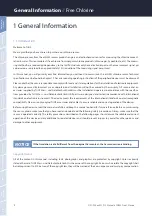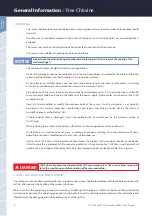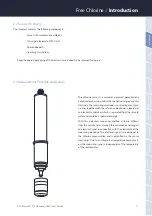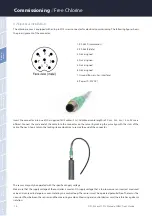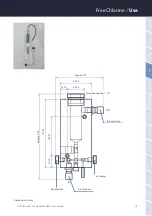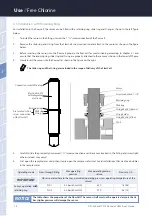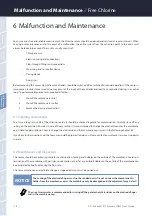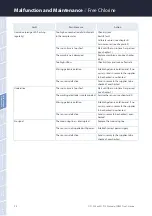
12
Us
e
Us
e
Calibr
ation
Calibr
ation
M
alfunc
tion and
M
ain
tenanc
e
M
alfunc
tion and
M
ain
tenanc
e
Comm-
issioning
Comm-
issioning
In
tr
oduc
tion
In
tr
oduc
tion
G
ener
al
Inf
or
ma
tion
G
ener
al
Inf
or
ma
tion
FA
Q
FA
Q
Technical
Da
ta
Technical
Da
ta
W
ar
ran
ty
W
ar
ran
ty
Cust
omer
ser
vic
e
Cust
omer ser
vic
e
Con
tac
t
Con
tac
t
Key
w
or
d
Inde
x
Key
w
or
d
Inde
x
Ac
cessor
ies
Ac
cessor
ies
D01-905en201912 Manual eCHEM Free Chlorine
Use
//
Free Chlorine
4 Use
The chlorine sensor can be operated with all TriOS controllers. Instructions for correct installation can be found in the relevant
controller manual.
A bypass installation of the sensor is essential for correct results. Therefore we strongly recommend to use the sensor in the
flow cell type FLC for permanent use.
A sudden failure of the sensor can lead to dangerous over-metering. Take appropriate precautions in
this case! Check system for odour, check water for abnormal discolouration. In case of strong over-
metering, the DPD-1 measurement can remain colourless because the dye is bleached by the chlorine
present.
Before installing the sensor in the flow cell type FLC, the system must be depressurized. Close the shut-off valves upstream and
downstream of the flow-through fitting. Push the sensor slowly into the flow-through fitting. The sensor must not be pushed
against the bottom of the fitting.
Max. operating pressure of the sensor without retaining ring is 0.5 bar (5 mH2O). Max. operating
pressure of the sensor with retaining ring is 3 bar (30 mH2O).
The following tables give an overview of the permissible operating pressures, temperatures and corresponding flow rates of
the two flow cells offered FLC-1 and FLC-3. It is necessary to distinguish between operation with or without retaining ring.
The use of the sensor without flow cell is not recommended and can lead to loss of warranty.
NOTICE
NOTICE
NOTICE
Summary of Contents for Free Chlorine
Page 1: ...Free Chlorine OPERATING INSTRUCTIONS...
Page 2: ......




